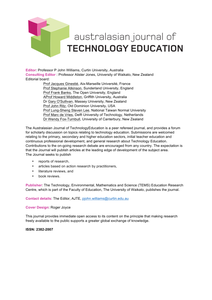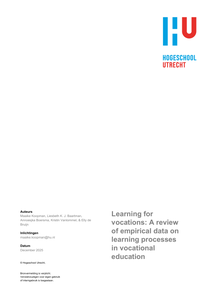Learning by Design (LBD) is a project-based inquiry approach for interdisciplinary teaching that uses design contexts to learn skills and conceptual knowledge. Research around the year 2000 showed that LBD students achieved high skill performances but disappointing conceptual learning gains. A series of exploratory studies, previous to the study in this paper, indicated how to enhance concept learning. Small-scale tested modifications, based on explicit teaching and scaffolding, were promising and revealed improved conceptual learning gains. The pretest-posttest design study discussed in this paper confirms this improvement quantitatively by comparing the conceptual learning gains for students exposed to the modified approach (n = 110) and traditional approach (n = 77). Further modifications, which resulted in a remodified approach tested with 127 students, show a further improvement through reduced fragmentation of the task and addressed science. Overall, the remodified approach (FITS model: Focus - Investigation - Technological design - Synergy) enriches technology education by stimulating an empirical and conceptual way of creating design solutions.
DOCUMENT

This paper presents a mixed methods study in which 77 students and 3 teachers took part, that investigated the practice of Learning by Design (LBD). The study is part of a series of studies, funded by the Netherlands Organisation for Scientific Research (NWO), that aims to improve student learning, teaching skills and teacher training. LBD uses the context of design challenges to learn, among other things, science. Previous research showed that this approach to subject integration is quite successful but provides little profit regarding scientific concept learning. Perhaps, when the process of concept learning is better understood, LBD is a suitable method for integration. Through pre- and post-exams we measured, like others, a medium gain in the mastery of scientific concepts. Qualitative data revealed important focus-related issues that impede concept learning. As a result, mainly implicit learning of loose facts and incomplete concepts occurs. More transparency of the learning situation and a stronger focus on underlying concepts should make concept learning more explicit and coherent.
DOCUMENT

This paper presents a mixed methods study in which 21 first-year student teachers took part that investigated learning outcomes of a modified learning by design task. The study is part of a series of studies that aims to improve student learning, teaching skills and teacher training. Design-based science challenges are reasonably successful project-based approaches for breaking down the boundaries between traditional school subjects. Previous learning outcomes of the extensively studied Learning by Design (LBD) approach demonstrated a strong positive effect on students’ skills. However, compared to traditional classroom settings, LBD provided little or no profit on (scientific) concept learning. For this, according to two preliminary studies, a lack of explicit teaching and scaffolding strategies, both strongly teacher-dependent, bears a share of responsibility. The results of this third study indicate that more emphasis on these strategies indeed strengthens concept learning without reducing positive effects on skill performance.
DOCUMENT

Uit het vooronderzoekvan het project Duurzamelearning communities: Oogstenin de Greenportblijkt dat12 factorenhierbijvan belangrijk zijn. Deze succesfactoren staan centraal in de interactieve tool Seeds of Innovation. Ook komen uit het vooronderzoek, aangevuld met inzichten uit de literatuur en tips om de samenwerking door te ontwikkelen en meer gebruik te maken van de opbrengsten 12 succesfactoren met toelichting, belangrijkste bevindingen en tips voor ‘hoe nu verder’, Poster, Walk through, De app die learning communities helptde samenwerkingnaareenhogerplan te tillenen innovatieveopbrengstenoptimaalte benutten.
MULTIFILE

Blended learning, a teaching format in which face-to-face and online learning is integrated, nowadays is an important development in education. Little is known, however, about its affordances for teacher education, and for domain specific didactical courses in particular. To investigate this topic, we carried out a design research project in which teacher educators engaged in a co-design process of developing and field-testing open online learning units for mathematics and science didactics. The preliminary results concern descriptions of the work processes by the design teams, of design heuristics, and of typical ways of collaborating. These findings are illustrated for the case of two of the designed online units on statistics didactics and mathematical thinking, respectively.
LINK
Experimental Learning and Innovation Environments, such as Living Labs, Field Labs, and Urban Innovation Labs, are increasingly used to connect multi-stakeholders in envisioning, creating, experimenting, learning, and trying out novel responses to diverse societal challenges. With designers facilitating the co-creation processes that take place in these labs, the design discipline plays an important role in these experimental environments. Applied Design Research in Living Labs and other Experimental Learning and Innovation Environments combines a focus on Experimental Learning and Innovation Environments (or Living Labs) with a focus on Applied Design Research. It offers an interdisciplinary perspective by bringing together diverse stakeholders from different disciplines. The book will adopt an interdisciplinary perspective, integrating insights from design, innovation, sociology, technology, and other relevant fields. It showcases real-world examples and case studies of successful Applied Design Research in Living Labs and focuses on design dilemmas that emerge while working in these Experimental Learning and Innovation Environments. The book explores the role of various stakeholders, including the roles that may play out during the development of Experimental Learning and Innovation Environments, and goes on to discuss the balance between fixed or fluid roles of these stakeholders and the polarity between working within one specific discipline versus working with various expertise or disciplines. Designers, government representatives, and researchers who apply a living lab approach to solve multi-stakeholder challenges in various fields by applying Urban Innovation Labs, Energy Living Labs, Mobility Living Labs, Health Living Labs, Education Living Labs, or Social Living Labs will find this book of interest.
LINK
This article reports on a literature review on empirical research investigating learning for vocations in the context of vocational education. We included 36 studies in which learning for vocations is empirically studied. Learning for vocations is characterised based upon prevalent research traditions in the field and framed from the perspective of vocational education and organised learning practices. This framing and characterisation directed the search terms for the review. Results show empirical data on vocational learning and illustrate how learning processes for the functions of vocational education - vocational identity development, development of a vocational repertoire of actions, and vocational knowledge development - actually take place. The review further shows that, empirical illustrations of learning processes that occur in the context of vocational education and organised learning practices are relatively scarce. The findings can be typified in relation to our theoretical framework in terms of three learning processes, that is learning as a process of (a) belonging, becoming, and being, (b) recontextualization, and (c) negotiation of meaning and sense-making. We argue that more empirical research should be carried out, using the functions of vocational education and the three learning processes to better understand vocational learning.
DOCUMENT

In this paper we explore the influence of the physical and social environment (the design space) son the formation of shared understanding in multidisciplinary design teams. We concentrate on the creative design meeting as a microenvironment for studying processes of design communication. Our applied research context entails the design of mixed physical–digital interactive systems supporting design meetings. Informed by theories of embodiment that have recently gained interest in cognitive science, we focus on the role of interactive “traces,” representational artifacts both created and used by participants as scaffolds for creating shared understanding. Our research through design approach resulted in two prototypes that form two concrete proposals of how the environment may scaffold shared understanding in design meetings. In several user studies we observed users working with our systems in natural contexts. Our analysis reveals how an ensemble of ongoing social as well as physical interactions, scaffolded by the interactive environment, grounds the formation of shared understanding in teams. We discuss implications for designing collaborative tools and for design communication theory in general.
MULTIFILE

Educational institutions and vocational practices need to collaborate to design learning environments that meet current-day societal demands and support the development of learners’ vocational competence. Integration of learning experiences across contexts can be facilitated by intentionally structured learning environments at the boundary of school and work. Such learning environments are co-constructed by educational institutions and vocational practices. However, co-construction is challenged by differences between the practices of school and work, which can lead to discontinuities across the school–work boundary. More understanding is needed about the nature of these discontinuities and about design considerations to counterbalance these discontinuities. Studies on the co-construction of learning environments are scarce, especially studies from the perspective of representatives of work practice. Therefore, the present study explores design considerations for co-construction through the lens of vocational practice. The study reveals a variety of discontinuities related to the designable elements of learning environments (i.e. epistemic, spatial, instrumental, temporal, and social elements). The findings help to improve understanding of design strategies for counterbalancing discontinuities at the interpersonal and institutional levels of the learning environment. The findings confirm that work practice has a different orientation than school practice since there is a stronger focus on productivity and on the quality of the services provided. However, various strategies for co-construction also seem to take into account the mutually beneficial learning potential of the school–work boundary.
LINK
Objectives: To investigate immediate changes in walking performance associated with three implicit motor learning strategies and to explore patient experiences of each strategy. Design: Participants were randomly allocated to one of three implicit motor learning strategies. Within-group comparisons of spatiotemporal parameters at baseline and post strategy were performed. Setting: Laboratory setting. Subjects: A total of 56 community-dwelling post-stroke individuals. Interventions: Implicit learning strategies were analogy instructions, environmental constraints and action observation. Different analogy instructions and environmental constraints were used to facilitate specific gait parameters. Within action observation, only videotaped gait was shown. Main measures: Spatiotemporal measures (speed, step length, step width, step height) were recorded using Vicon 3D motion analysis. Patient experiences were assessed by questionnaire. Results: At a group level, three of the four analogy instructions (n=19) led to small but significant changes in speed (d=0.088m/s), step height (affected side d=0.006m) and step width (d=–0.019m), and one environmental constraint (n=17) led to significant changes in step width (d=–0.040m). At an individual level, results showed wide variation in the magnitude of changes. Within action observation (n=20), no significant changes were found. Overall, participants found it easy to use the different strategies and experienced some changes in their walking performance. Conclusion: Analogy instructions and environmental constraints can lead to specific, immediate changes in the walking performance and were in general experienced as feasible by the participants. However, the response of an individual patient may vary quite considerably.
DOCUMENT
